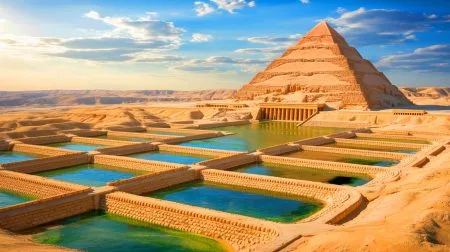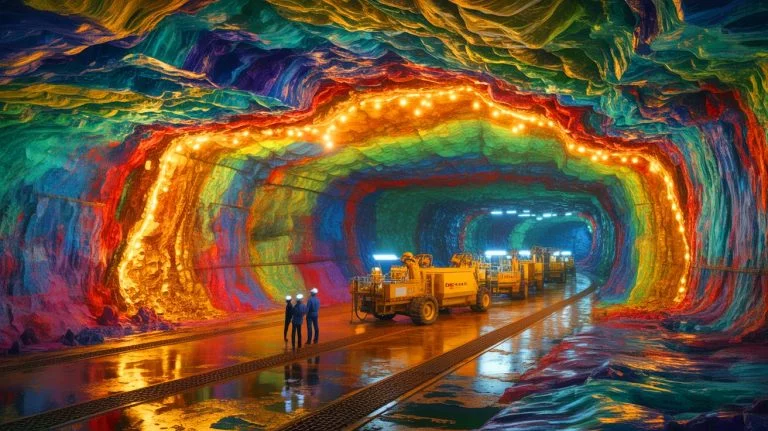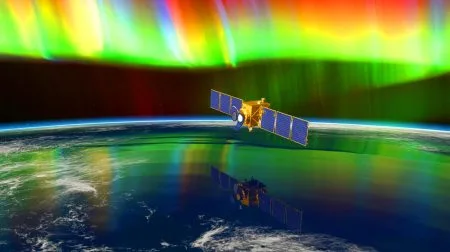| IN A NUTSHELL |
|
Deep beneath the rolling hills of Pingjiang County, Hunan Province, China, a monumental geological discovery is set to redefine the global gold industry. A team of esteemed geologists has unearthed one of the largest gold reserves in recent memory. Hidden more than 1.2 miles underground, this treasure trove holds over 1,000 metric tons of gold, valued at approximately $85 billion. This revelation, facilitated by cutting-edge prospecting technologies, marks a significant chapter in China’s resource extraction narrative. The Wangu gold field, now recognized as one of the richest untapped mineral deposits, is capturing the attention of both domestic and international mining circles.
Visible Gold and a Rare Density
Within the Wangu gold field, over 40 gold veins have been identified, penetrating the bedrock at depths reaching 1.86 miles. Initial explorations at about 1.24 miles revealed reserves of around 300 tons, but subsequent drillings exposed deeper layers with even more promise. The ore extracted from these depths boasts a gold concentration as high as 138 grams per metric ton, a grade seldom observed in modern, large-scale mining operations. As ore-prospecting expert Chen Rulin points out, the presence of visible gold within the drilled rock cores underscores the exceptional quality of mineralization found at this site. The visible gold, typically encountered only in smaller high-grade samples, has elevated the Wangu deposit to comparisons with the world’s most productive mines.
Jaya Anand Singh’s Research Path : A Journey from Curiosity to Contribution
Technology Behind the Breakthrough
The discovery of the Wangu gold field is not merely a stroke of geological fortune but the result of advanced technological innovation. Cutting-edge surveying methods, particularly three-dimensional geological modeling, have played a pivotal role in this breakthrough. These technologies enabled scientists to accurately identify subterranean formations, guiding drill rigs with unprecedented precision towards gold-rich zones. Liu Yongjun, the deputy director of the Hunan Geological Bureau, has confirmed ongoing drilling efforts around the main deposit’s periphery, leading to the discovery of additional gold veins. As exploration continues, the potential to expand the known boundaries of this vast deposit grows, promising even greater mineral wealth.
A New Mining Frontier in Central China
The enormous scale of the Wangu deposit positions Hunan Province as a burgeoning powerhouse in China’s gold mining sector. The development of this field is likely to stimulate significant investment, not only in mining operations but also in the region’s infrastructure. This includes enhancing transport and energy networks necessary to support such a large-scale mining endeavor. Technicians from the Hunan Province Geological Disaster Survey and Monitoring Institute are already busy assessing rock samples and preparing for broader extraction efforts. Although a precise timeline for commercial mining has not been established, the field’s potential ensures it will be a priority for future development, promising substantial economic growth for the region.
Environmental Watchdogs Remain Alert
The scale of planned extraction has naturally drawn scrutiny from environmental watchdogs. Large-scale gold mining at such depths poses several environmental risks, including land subsidence, water contamination, and carbon emissions. In response, authorities in Hunan have committed to conducting operations under stringent regulatory oversight. Experts suggest that the development of the Wangu gold field could serve as a benchmark for harmonizing industrial ambition with environmental stewardship. While the reserve’s size is headline-worthy, the methods employed in its extraction could prove equally significant, potentially setting new standards for environmentally responsible mining practices.
The discovery of the Wangu gold field presents monumental opportunities and challenges. As the world watches this unfolding saga, the decisions made in the coming years could have far-reaching implications for both the global gold market and environmental policies. How will the balance between resource extraction and ecological responsibility be navigated in this new era of mining?
Did you like it? 4.5/5 (22)







Wow, $85 billion! That’s a lot of gold. How do they even transport that much? 🚚💰
Are there any plans to invest in local communities with the revenue from this discovery?
Sounds too good to be true! How reliable is this discovery?
Thank you for sharing this amazing news. It’s incredible what technology can uncover these days.
I hope they prioritize the environment while extracting this gold. 🌍💚
Does this mean gold prices will drop with all this new supply?
Can someone expalin three-dimensional geological modeling? Sounds fascinating!
Has any part of this gold reserve been earmarked for technological advancements?
Do you think this could lead to a gold rush in the region?
I’m skeptical… how do they know there’s really that much gold? 🤔
Massive find! But shouldn’t more focus be on sustainable mining practices?
Is this the largest gold deposit ever found or are there other comparable ones?
Could this gold discovery influence China’s economy significantly?
Great article but what’s the impact on the local wildlife? 🦊🌿
What are the potential downsides of this discovery?
How long does it usually take to start mining after a discovery like this?
This is amazing! I wonder what other treasures are hidden underground. 😮💎
Who gets the profits from this gold? The government or private companies?
Hope this doesn’t turn into an environmental disaster. Fingers crossed!
What’s the estimated timeline for extraction to start on a commercial scale?
How do they ensure the safety of workers at such depths?
Crazy to think there’s still so much left to discover on Earth. 🌍
Can this new find affect global gold reserves significantly?
Is the gold easily accessible, or will it be a challenge to extract? 🏗️
How do they plan to keep the mining process environmentally friendly?
What could be the long-term effects on the local environment?
Does this article mention anything about the quality of the gold? Is it pure?
Are we talking about a potential gold rush here? 🤑
Why haven’t more discoveries like this been made sooner?
What kind of technological advancements made this discovery possible?
Are there any cultural or historical significances to the land where the gold was found?
Thank you for keeping us updated with these exciting discoveries! 😊
With all this gold, could this region become a new hub for global mining?
Has anone given any thought to the fact that with modern technology man has found ways to locate gold and other rare minerals. The find in Hunan is only one of others being found. Gold will become so plentiful that it will lose its value. The scarcity is what makes it valuable.